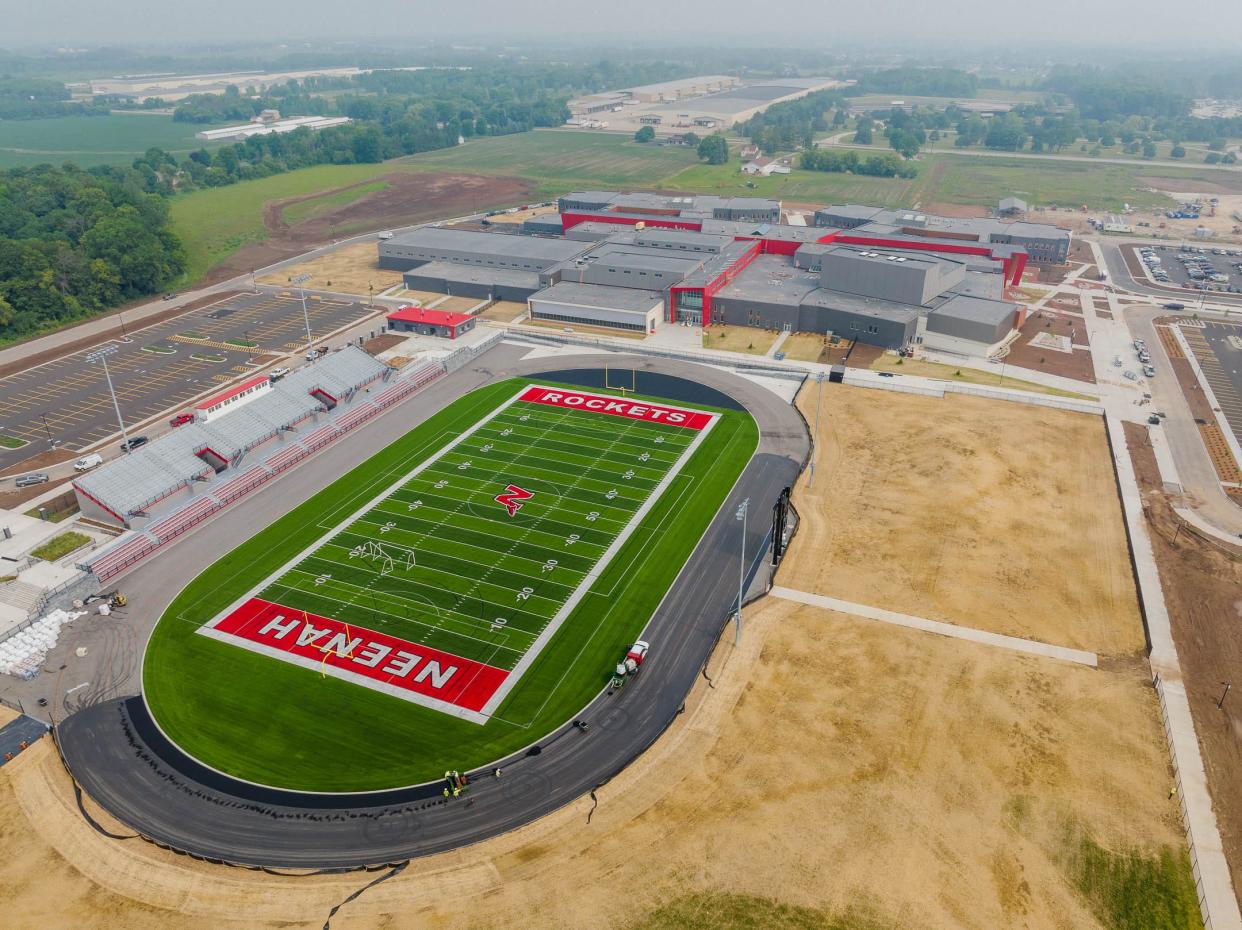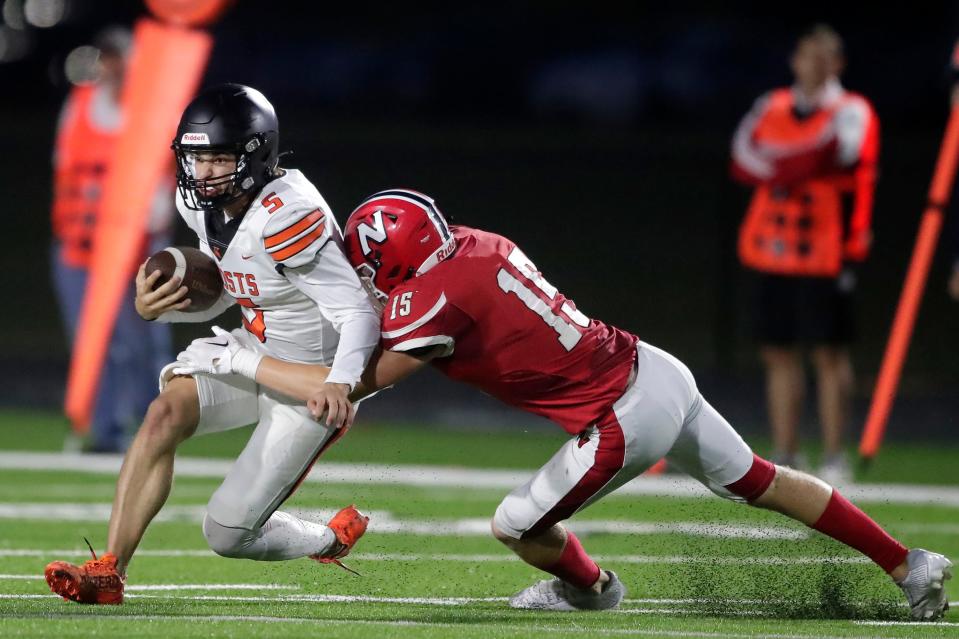Neenah High School's artificial turf costs $525,000 and has shock pad to reduce injuries

Reader question: What was the cost of the artificial turf at Neenah High School? Was that a wise investment, given all the talk about replacing artificial turf with natural grass to lessen injuries to athletes?
Answer: The purchase and installation of the artificial turf at Neenah High School cost $524,808. The expense was part of the $171 million cost of the new school, which is located at 500 Rocket Way in Fox Crossing.
The Neenah Joint School District hired Midwest Sport and Turf Systems of Plainfield, Illinois, for the job. The contract includes three years of maintenance and an eight-year warranty.
Neenah's field features a shock pad underneath the synthetic turf to cushion blows and make it safer for athletes. The shock pad cost $127,308 and was included in the total.
"We had other schools telling us that's not really necessary, but we decided to go ahead and do it," Jim Strick, the district's communications manager, told me.

The debate over whether artificial turf results in greater injuries compared to natural grass has been making headlines in the NFL and elsewhere since Sept. 11, when New York Jets quarterback Aaron Rodgers tore his Achilles tendon on artificial turf at MetLife Stadium.
The Milwaukee Journal Sentinel explored the player safety issue at the high school level in an in-depth story published Tuesday.
Strick pointed out the differences between grass fields in NFL stadiums and those in high school stadiums. Lambeau Field, for example, has top-of-the-line grass and full-time groundskeepers to prepare for eight to 10 games per year.
"Compare that to here, where one muddy game and the field is not very safe anymore," Strick said. "We moved a football game to Kimberly a few years ago because our grass field was in such poor shape."
With artificial turf, school maintenance crews no longer spend time seeding, watering, fertilizing, mowing or painting the grass. Strick said in northern climates, when trying to get as much use out of a field as possible, "turf really is the way to go."
Watchdog Q&A: Duke Behnke answers your local government questions
Neenah and Fond du Lac were the last schools in the Fox Valley Association to switch to artificial turf.
Neenah's field is lined for football, soccer and lacrosse. Soccer has yet to make the switch.
"They prefer to play on grass," Strick said, "so they're still playing at Harry Kelderman Field right now. There will be a stadium for them at the new high school as well. That's not finished yet."
Baseball and softball will use the artificial turf for practices in the spring. Beyond the sports teams, the field can be used by physical education classes and the marching band.
"It's so much more than what we've been able to do in the past," Strick said.
How long the turf will last before it needs to be replaced is unknown. It is touted to have a lifespan of 20 years.
Post-Crescent reporter Duke Behnke answers your questions about local government. Send questions to dbehnke@gannett.com or call him at 920-993-7176.

SUPPORT LOCAL JOURNALISM: Our subscribers make this coverage possible. Click to see The Post-Crescent's special offers at postcrescent.com/subscribe and download our app on the App Store or Google Play.
This article originally appeared on Appleton Post-Crescent: Neenah High School pays more for shock pad under artificial turf

